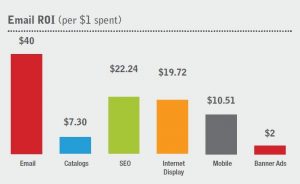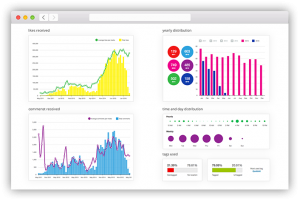eCommerce is constantly evolving. But some things just don’t change. Early in my career, I led software development teams that worked on the first eCommerce platforms for Wal-Mart and Sam’s Club. This was right around the time of the dotcom bubble burst. Behind the scenes, as the executives were deciding whether this new “online shopping” thing was going to turn into something, we were trying to figure out what eCommerce should look like for our company. Our job was to design an eCommerce platform that could serve the unique needs of the largest retailer in the world. And there were a lot of unique needs!
Much has changed since those early days of eCommerce. I still program from time to time to keep my saw sharp. But I tend to focus most of my time on helping clients design, build and successfully launch (or re-launch) their eCommerce businesses. Whether a company is selling to consumers (B2C) or transacting with their supply chain (B2B), eCommerce has become a way of life. And it’s exciting to see how far we’ve come, as well as the opportunities that lie ahead.
Some things, however, have not changed. It’s easy to imagine that because we do so much more with eCommerce today that nothing could remain from the early days. It’s true, much has changed over the years, both in what technology can do and how companies use it to drive innovation. In many ways, the underlying mechanics of eCommerce are significantly different from what they once were. But even after all these years, there are some core perspectives we should all keep in mind when deciding how best to build and operate an eCommerce business.
- It’s still business. And it’s still people in companies that run that business.
It’s important for business leaders to understand what they need in an eCommerce platform. This is no small task. Talking tech can make many business leaders’ eyes glaze over. Software platforms, servers, databases… They have little interest in such things. But business, now that’s something they know. And although there are a lot of technology decisions to be made in an eCommerce project, building a business is what it’s all about.
This is why it’s so important that the team you tap to build your eCommerce solution intimately understands how eCommerce businesses operate and what business leaders need to know to make an informed decision. For many companies, that means bringing in a trusted implementation partner who has the experience and expertise to guide them through these critical decisions.
- Technology alone isn’t enough. But get it wrong, and you’ll feel the pain for years. The technology tools you use, though essential, are only valuable if you know how to use them properly. The modern eCommerce platforms of today provide a robust toolbox for companies seeking digital dominance in their industries. Over the years, we’ve watched platform vendors compete for clients by constantly delivering new “out-of-the-box” tools, features, integrations and capabilities that companies can use to get a jumpstart on eCommerce. While it’s great to see so many viable platforms available in the market, having so many choices tends to make choosing the right one for your business that much harder to make.
As the features and functionality that these platforms offer become specialized to serve key business capabilities, it becomes increasingly important to focus on the business that you are building eCommerce for. Yes, selecting the right platform takes time. But making the wrong choice could take years off your life. Whether you team up with a partner or decide to take on the implementation of an eCommerce platform yourself, be careful not to become so consumed with technology decisions that you lose sight of what it’s all for… your business.
- Digital innovation is continuous. We create; We learn; We create better. eCommerce is not a one-and-done effort. It’s an ongoing effort to continually innovate faster than your competitors. Whether it’s consumers demanding you do more to gain their loyalty or supply chain partners requiring you to integrate with their disparate systems, constant change shapes today’s digital landscape. And companies who wish to stay competitive in this dynamic environment need to be able to adapt to those changing demands quickly. Modern eCommerce platforms provide significantly more options to build, test and deploy software changes than we ever had in my coding days. The “cloud” has ushered in the emergence of Platform-as-a-Service (PaaS) eCommerce platforms, giving companies access to robust capabilities without worrying about the digital plumbing that runs it. Combine these modern eCommerce platforms with equally modern project and development methodologies like Agile, Scrum, or DevOps, and companies learn to quickly move innovative ideas through the development pipeline from inception to completion.
Whether we’re talking about eCommerce that enables companies to sell direct to consumers (B2C) or eCommerce that empowers businesses in a supply chain to transact with each other (B2B), all companies rely heavily on eCommerce systems to remain competitive in today’s digital economy. The capabilities of these eCommerce platforms have come a long way since the “build-from-scratch” days at Wal-Mart. A constant stream of new user features, backend functionality and pre-built integrations fuels the growth of a dynamic and thriving digital ecosystem. And as more trusted “in-the-cloud” platform providers emerge and drive down the cost of doing eCommerce business, even more companies — large and small — will discover that now may be exactly the right time to pursue their digital ambitions. If that’s you, I hope you’ll remember that you’re building a business, not technology; the platform and partner you choose is a big deal; and, innovative eCommerce doesn’t end after you launch. That’s just the beginning.
Digital & Social Articles on Business 2 Community(53)







